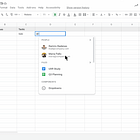The Dark Mode Dilemma
Going from a fix for late-night-browsing to becoming a must-have-feature-before-launch, the dark mode dilemma is real. So should your product go dark from day one?
Hey hey,
Last week, we talked about how Google is becoming productive with Chips.
This time, we are flipping the lights off. We’re talking about dark mode.
The Tech World Going Dark
Dark mode has gone from nice-to-have to can’t-launch-without-it.
iOS, Android, Chrome, Slack, Instagram... they all made the switch.
It started as a fix for eye strain and late-night browsing.
But over time, it became a style choice.
And now? It’s almost a default expectation.
Still, not every app gets it right.
Some forget to design for both themes.
Others make dark mode feel like a dimmed version of light mode - not an experience of its own.
Here's What We Know
Apple made system-wide dark mode official with iOS 13. Google also rolled out system-wide Dark Mode with the release of Android 10. Both in 2019.
X/Twitter made dark mode the primary option for new users in 2021 and never looked back. However, users can still switch back to the light mode in settings.
Google Search now auto-switches to dark mode based on your system settings.
Apps like Notion and Slack let users schedule dark mode by time of day, treating it like a circadian feature.
Think Like a PM
If you were building a new app, how would you decide if you should include dark mode or not?
Should dark mode look exactly like light mode or feel different and special?
What are the potential challenges of including dark mode?
Drop your thoughts in the comments — Let’s see who gets it the best!
Thoughts From the JAPM Team
Last week, we talked about Google Chips, and this is what we think.
Smart chips aren’t just about being cool. They are solving the clutter problem.
We all know the pain of jumping between tabs or hunting down a file or date that’s buried in the doc. Chips bring everything to you, neatly in one place.
It's like a quick shortcut to your tasks, people, and content.
But these chips aren’t just for us lazy folks. They make documents do things. You don’t need to switch apps to set up meetings, link to files, or track dates.
Sometimes, it’s not the shortcut that’s the problem. It’s the overload.
Adding too many chips could clutter the document, turning a clean workspace into a mess of clickable distractions. So, if we were measuring success?
We would look at chip usage per doc.
Time saved per session.
Fewer comments like “link pls?” or “where’s the file?”
It’s not just about working smarter. It’s about thinking less and clicking less.
See you in the comments
— Sid







1. Based on when users use the app / product, we could decide if dark mode is required. Like if most of the usage is in the evening/ night, we could go for dark mode. This usually happens for entertainment apps like Twitter/ Instagram/ Facebook.
2. If it's possible to track the system settings and if most number of users has enabled dark mode, then it makes sense to build it in the product.